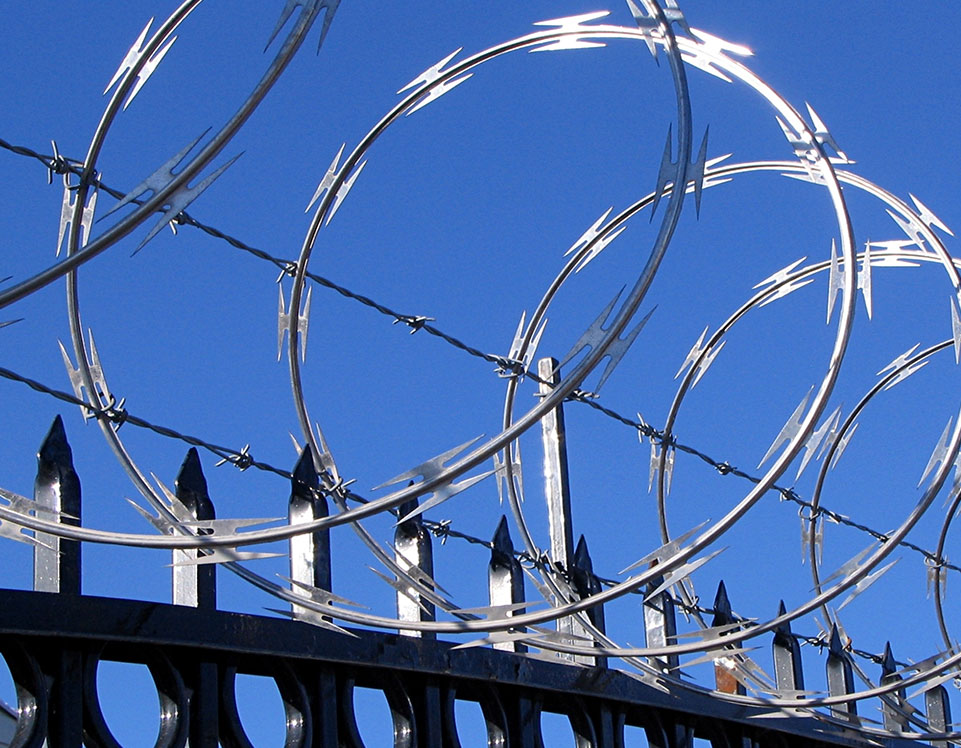Setting Up a Fiber Optics Infrastructure for Security Installations in Commercial Spaces
Setting Up a Fiber Optics Infrastructure for Security Installations in Commercial Spaces
Blog Article
The Ultimate Guide to Fiber Optic Security Solutions for Your Organization
In an era where protection issues are critical for businesses, comprehending the details of fiber optic technology can be transformative. This overview describes just how incorporating fiber optic safety and security systems not only boosts information defense however likewise provides benefits like resistance to disturbance and real-time surveillance abilities.
Recognizing Fiber Optic Modern Technology

The core of a fiber optic cable television consists of a slim glass or plastic center, surrounded by a cladding layer that shows light back right into the core. Single-mode fibers are made for long-distance transmission, while multi-mode fibers are ideal for much shorter ranges, typically used within structures.
Optical fiber are not only much faster however additionally a lot more protected than conventional circuitry. Their inherent resistance to electromagnetic interference and the problem of tapping into the signal without detection make them a favored selection for organizations prioritizing data stability and safety and security. As companies increasingly rely upon protected and reliable interaction systems, comprehending fiber optic technology comes to be necessary for educated decision-making.
Key Advantages of Fiber Optic Security
When taking into consideration protection choices for an organization, the benefits of fiber optic systems are particularly compelling. Primarily, fiber optic modern technology provides phenomenal data transmission rates and bandwidth capability, making it excellent for managing high-resolution video clip feeds from surveillance cameras. This ability ensures that safety and security personnel receive real-time data, enhancing overall response times to potential security dangers.
Furthermore, fiber optic cable televisions are inherently immune to electromagnetic disturbance, which can jeopardize the integrity of typical copper-based systems. This resistance makes sure that the data transmitted remains secure and continuous, giving an extra reliable protection facilities. In addition, optical fiber are much less at risk to physical damage, as they are made from glass as opposed to metal, decreasing upkeep expenses and downtime.
Another substantial benefit is the raised scalability of fiber optic systems. As company demands advance, fiber networks can be easily broadened to fit extra safety and security tools without substantial overhauls to the existing framework. Ultimately, fiber optic systems offer improved cybersecurity features, consisting of encryption abilities that secure delicate data from unapproved access. Jointly, these benefits make fiber optic safety systems a durable option for companies seeking to enhance their security steps.
Installation Process and Factors To Consider
Taking into consideration the complexities included, the setup process of fiber optic safety systems needs cautious planning and implementation. The first action click over here involves a detailed site evaluation to determine optimum areas for cabling and equipment. This assessment ought to consider ecological elements, existing infrastructure, and possible vulnerabilities.

Additionally, the setup has to adhere to neighborhood building ordinance and market requirements. This might consist of collaborating with different stakeholders such as building supervisors, IT groups, and safety personnel to ensure smooth assimilation with existing systems.
Post-installation, rigorous testing is necessary to verify system performance and recognize any type of problems that may occur. By prioritizing these considerations during the installment process, businesses can make certain a durable Visit Your URL and efficient fiber optic safety and security system that satisfies their particular safety and security needs.
Latest Technologies in Fiber Optic Security
Recent developments in fiber optic innovation have considerably boosted the capabilities of security systems for businesses. One of one of the most noteworthy technologies is the integration of fiber optic sensors that can spot vibrations and breaches along the perimeter of a center. These sensing units give real-time tracking, making it possible for rapid feedback to prospective breaches.
Furthermore, the advancement of distributed fiber optic noticing innovation enables the continuous monitoring of huge locations with a single fiber wire. This approach not only decreases installment prices but additionally boosts the integrity of keeping an eye on systems by eliminating the requirement for multiple, separate sensors.
Moreover, advancements in multiplexing methods have enabled companies to send substantial quantities of information over fiber optic networks, boosting the abilities of video monitoring systems. High-def video clip feeds can currently be sent over fars away without loss of high quality, ensuring that security workers have accessibility to clear and actionable info.
Last but not least, making use of synthetic intelligence (AI) together with fiber optic systems is reinventing risk detection. AI algorithms can analyze information from fiber optic networks to identify uncommon patterns or habits, permitting for aggressive safety actions. These developments collectively stand for a considerable leap onward in fiber optic safety innovation.
Choosing the Right System for Your Company
Choosing the suitable fiber optic safety go and security system for your business is critical for ensuring optimum security and assurance. To make an enlightened selection, evaluate your certain security requirements, taking into consideration elements such as the size of your facilities, the nature of your procedures, and possible vulnerabilities.
Begin by evaluating the degree of safety and security called for; as an example, high-risk environments might require sophisticated systems with integrated security and breach discovery capabilities. Next off, take into consideration scalability; as your service expands, your protection system should can expanding to fit raised demands without considerable overhauls.
Furthermore, explore the dependability and efficiency of different systems. Seek service providers with well-known credibilities and client reviews that vouch for their solution high quality. It's likewise suggested to inquire regarding the modern technology's compatibility with existing infrastructure, ensuring a smooth combination procedure.
Conclusion
In conclusion, fiber optic safety and security systems present a durable service for enhancing service protection facilities. The most current developments further strengthen the efficiency of these systems, making sure that businesses remain safe and secure and adaptable in an ever-evolving threat landscape.
Report this page